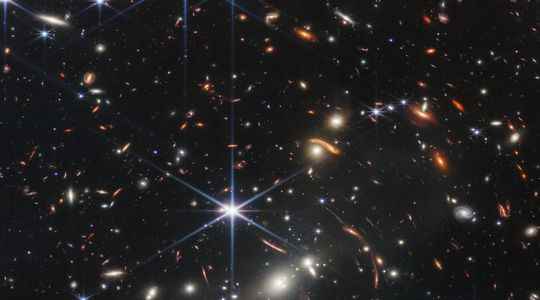This is called a long exposure. Very long. The historic image captured by the James Webb Telescope, six months after launch into orbit, unveiled yesterday by NASA at the White House in the company of US President Joe Biden, required an observation time of 12.5 hours. But the game was worth the candle.
This picture is “the deepest and clearest infrared image ever taken of the distant Universe so far,” the US space agency said. It thus shows thousands of galaxies – the cluster SMACS 0723 – at the heart of which certain structures “have never been seen before”, according to NASA. The research work is therefore just beginning. “Researchers will soon begin to learn more about the masses, ages, histories and compositions” of these galaxies, added the space agency.
Scientists expected no less from James Webb, the most powerful telescope ever designed, after 30 years of development and nearly $10 billion in investment. “A new era has begun for astronomy,” Jonathan Lunine, astronomer at Cornell University, commented to AFP, calling the image “fantastic”.
“Although it is by no means the farthest Webb can see, (…) it shows the power of this remarkable telescope: enormous sensitivity, a wide range of wavelengths, and vivid clarity of ‘picture,’ he added.
Continuation of the images this Tuesday
Although the names of James Webb’s first five cosmic targets were announced last week, the images had so far been jealously guarded in order to create suspense. The following images of this genuine surprise bag will be revealed during a NASA online event on Tuesday morning. They must both impress the general public with their beauty, but also demonstrate to astronomers around the world all the power of the four scientific instruments on board.
Experts will be able to begin to interpret data collected using dedicated software, giving the starting signal for a great scientific adventure. Two photos of nebulae – very photogenic and gigantic clouds of gas and dust where stars are formed – are on the program for Tuesday: the Carina Nebula, and that of the Austral Ring. Another target, Stephan’s Quintet, a group of galaxies interacting with each other.
The first spectroscopy from the James Webb Telescope is also due to be made public on Tuesday. This is not an image per se, but a technique used to determine the chemical composition of a distant object. In this case, WASP-96 b, a giant planet composed mainly of gas and located outside our solar system. Exoplanets (planets orbiting a star other than our Sun) are one of James Webb’s main areas of research. About 5000 have been discovered since 1995, but they remain very mysterious. The goal is to study their atmosphere to determine if some could turn out to be worlds conducive to the development of life.
